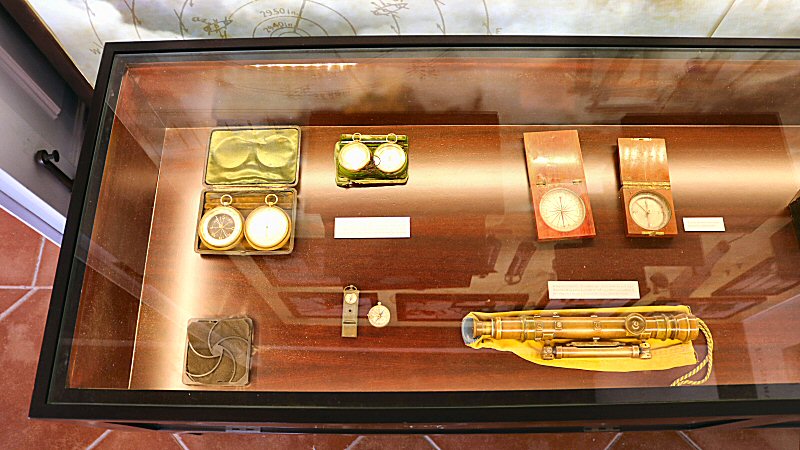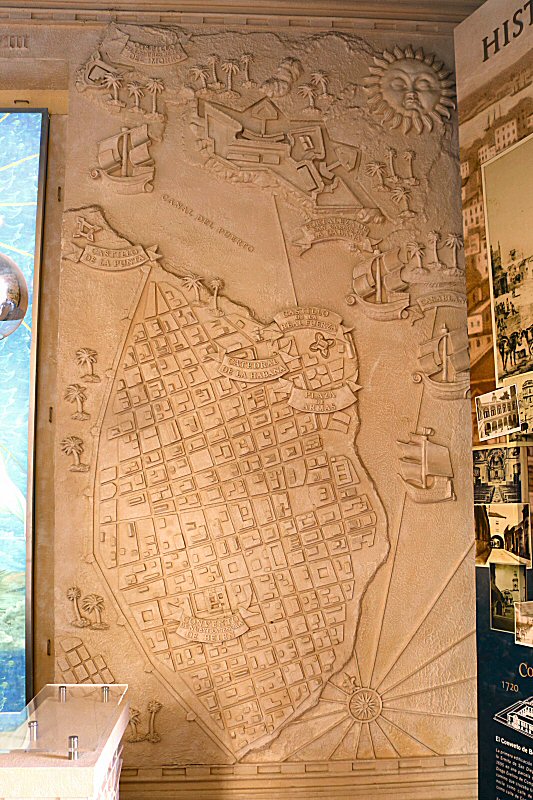
SCIENTIFIC VALUE OF THE CHURCH
Father Benito Viñes Martorell was
the most prominent personality of the observatory in the
19th century. He wrote the first tropical cyclone warning,
documented in the history of meteorology, in 1875. In 1876,
he made a detailed theoretical analysis of his observations,
carried out in regions, destroyed by the cyclones that
allowed him to delineate a theoretical model about the
vertical structure of the tropical cyclones, based on the
direction and the shape of the clouds, the direction of the
winds at various levels of the troposphere and atmospheric
pressure values at different distances from the center of
the cyclones. This is the first scientific study on the
impact of natural disasters of hydro-meteorological origin
carried out in Cuba and the Caribbean region. In 1877 he
formulated the Viñes Laws that were among the most important
scientific contributions of the observatory.
The telescope in the observatory was
the largest of its kind in Cuba until 1922. It had a 152 mm
lens, built in the UK. Viñes used this telescope to observe
the transit of Venus that took place in 1882. It constitutes
the first study of such a phenomenon, carried out in Cuba.
In 1886 Viñes succeeded to establish
a network using the underwater telegraph system. Thus, the
Observatory could receive real time information about the
tropical cyclones, sent from Trinidad, Martinique, Antigua,
Puerto Rico, Barbados, Jamaica and Santiago de Cuba, during
the months of August to October, the most active months of
the hurricane season. This system constitutes the first
effort to organize a network of observers of the weather
outside the territory of the island. Many captains came to
the Observatory for updated weather information prior to
sailing, as well as to set the clocks on board by the timer
of Bethlehem and calibrate their instruments.
In 1907 the first seismological
station was established by the Jesuits on a farm in Luyanó,
southwest of Havana. The station had two seismographs,
dedicated to study the country’s seismotectonics. The farm
was acquired by the Jesuits as a resting place and for
housing of the religious coming from Europe, as it was
sufficiently far from the curious eyes. Father Mariano
Gutiérrez-Lanza played a leading role in the promotion of
the seismic work.
In 1910 the Observatory achieved
another success, but this time in the field of astronomy.
Father Mariano Gutiérrez-Lanza himself observed the
perihelion of the famous Halley comet by using a telescope.
He carried out a campaign by writing several articles to
the media, in order to convince the population that the
transition of the comet would not harm the earth and that it
was not the end of our planet, as mentioned in the Bible.
The Observatory also provided great
services with warnings against cyclone and managed to keep
many captains away from the route of the cyclone. The
forecasts of Gutiérrez-Lanza, transmitted by a wireless
means like radiotelegraph sent from the Morro radiotelegraph
station, saved many lives in 1920s.
The Observatory functioned as a
center of scientific activity until the founding of the
Casablanca Meteorological Station. In 1925, the Colegio de
Belén moved to its new facilities in the area of Buenavista,
in Marianao, so that the religious complex fell into
disrepair. During the period of 1925 and 1962, when the
building fell into the hand of the state, several
dependencies were installed in the building. In 1988, the
Cuban Academy of Sciences took over the building with the
exception of its oldest areas, where the National Social
Security Archive was located; the rest of the property was
abandoned.
The fire in 1991 damaged important
areas of the building, such as the church and a few very old
cloisters, that was already affected by the collapse due to
the landslides and the vandalism of some unscrupulous
people. Soon the Cuban Academy of Sciences delivered the
building to the Oficina del Historiador Ciudad de la Habana
that transformed it into an active community center for the
physically and mentally impaired people, and for the
elderly. The original church and the convent, including five
of the six cloisters that serve as old people’s home, a
hostel and a junior high school, all are restored by the
Office of the City Historian and opened to public in 1996.
Currently, it is home of the Office for Humanitarian Affairs
of the Office of the City Historian and the center is
operated by the Order of the Sisters of Charity that focuses
on senior care. About fifty senior citizens are permanent
residents and dozens more come daily for activities, meals
and medical care. Convento de Belén also provides services
for mentally and physically disabled children and operates a
daycare center for young children.
The Iglesia y Convento de Belén,
Havana's first baroque church, is not a frequented place for
the tourists. It has a ground plan in the shape of a cross.
It is adorned with stone statues and pictures of religious
figures. The niche over the main door of the church contains
a nativity scene under a fluted conch shell that is
illuminated from behind by an amber reflector.
A new Museo de Meteorología y
Astronomía is inaugurated in the northwest tower that was
used for more than 65 years as a meteorological, geomagnetic
and astronomical observatory.
At the entrance of the museum, there
is a model, hung on the wall, showing the Old
Havana. There are also panels on the walls that contain
information about the phases that the Iglesia y Convento de
Belén had gone through. The tower has five levels, accessed
by a wide, but steep staircase. The museum is consisted of
three permanent exhibition halls, a multipurpose room, a
meteorological station and an astronomical observatory.
In the permanent exhibition halls,
you will admire a sample of meteorological and astronomical
measuring instruments that are exhibited in showcases or
hung on the walls. It may be easy to identify the
chronometers, compasses, barometers and thermometers, as
many of us used any of these instruments, in any period of
our lives, but it needs technical knowledge to recognize the
instruments, like the theodolites, sextants, magnetometers,
declinometers, psychrometers, evaporimeters, anemometers,
neuroscopes and actinometers. Even though there are labels
that contain short information about the instruments, the
assistance of the guide is necessary. However, none of the
staff knows English. There are also some archaeological
pieces discovered in excavations in the areas of the church
and the convent. The tower also has a terrace-gazebo 24
meters above sea level that provides a panoramic view of Old
Havana.
The popular Arco de Belén (Arch of Betlehem) is an extension of the religious complex, built over the Acosta street. The betlemites obtained the permission to build it in 1772. When it was completed in 1775, it started to serve as a part of the hospital.

